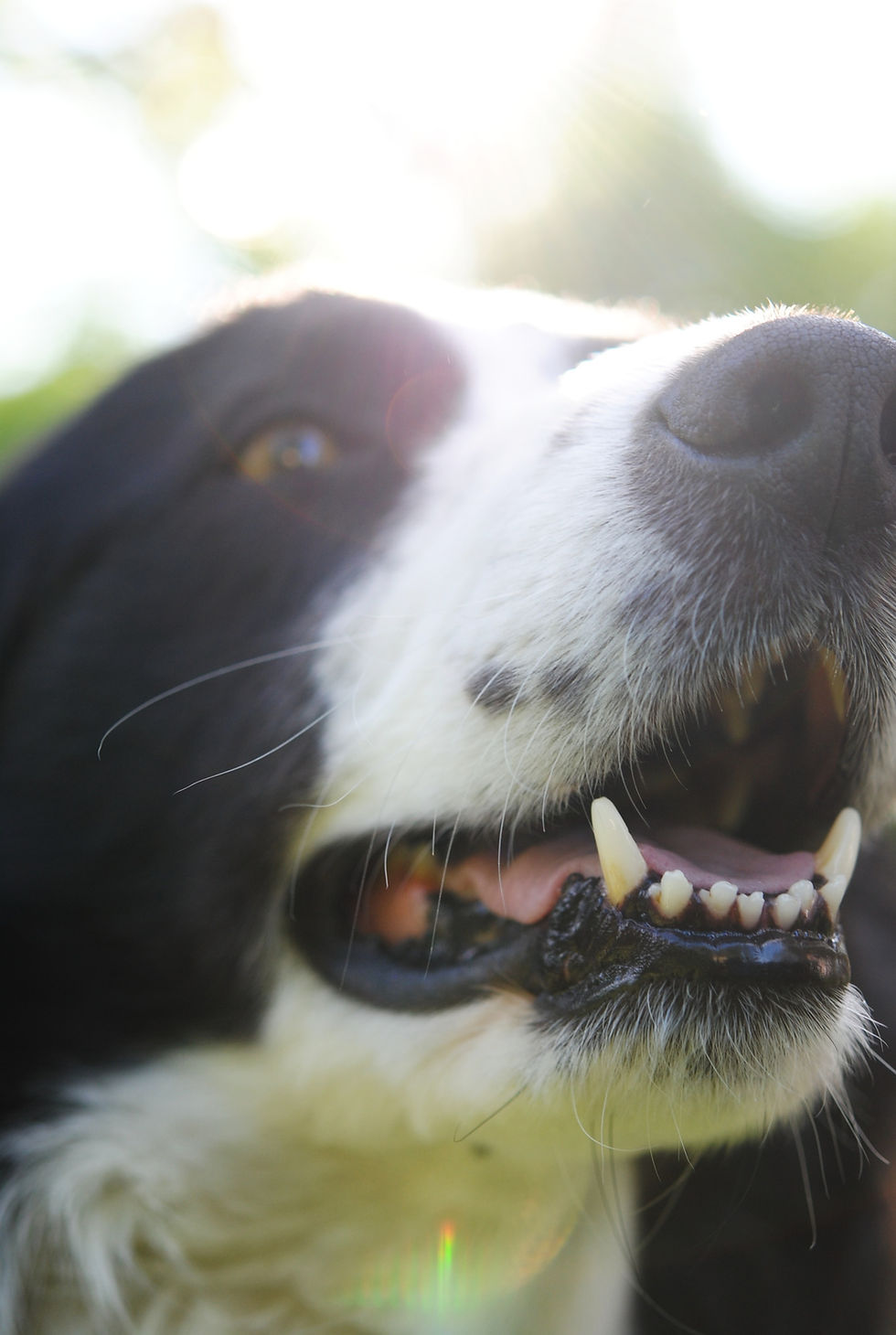Why is my dog's breath bad?
- vetspawspective
- May 23
- 2 min read
More Than Just Bad Breath: Why Your Dog's Dental Health Matters

Ever noticed a not-so-pleasant whiff when your dog gives you a loving lick? While it might seem like a minor annoyance, that "dog breath" is actually a major red flag, often indicating underlying dental disease. Just like us, dogs are susceptible to plaque and tartar buildup, and if left unchecked, this can lead to serious health problems far beyond their pearly whites. As vets, we can't stress enough the importance of proactive dental care for our canine companions.
Dental disease, or periodontal disease, is incredibly common in dogs, affecting most by the age of three. It starts subtly, with bacteria in the mouth forming plaque, a sticky film. If not removed, plaque hardens into tartar, which is visibly yellow or brown on the teeth. This tartar irritates the gums, leading to gingivitis – red, swollen, and often painful gums that bleed easily.
The real trouble begins when gingivitis progresses. As bacteria spread below the gum line, they attack the tissues supporting the teeth, leading to bone loss and eventually tooth mobility and loss. Imagine living with that constant pain! Dogs are incredibly stoic and often hide their discomfort, so you might not even realise they're in pain until the disease is advanced. Signs to watch for include:
Bad breath (halitosis)
Red, swollen, or bleeding gums
Yellow or brown tartar on teeth
Drooling
Reluctance to eat, especially hard food
Paw scratching at the mouth
Changes in chewing habits or favouring one side
Beyond the mouth, the bacteria from severe dental disease can enter the bloodstream. This means they can travel throughout the body, potentially affecting vital organs such as the heart, kidneys, and liver. This systemic inflammation and infection can significantly impact your dog's overall health and longevity.
The good news? Dental disease is largely preventable! Regular, professional dental cleanings under anaesthesia are the gold standard for removing plaque and tartar from above and, critically, below the gum line. This allows us to thoroughly assess each tooth, extract any that are severely diseased or painful, and give their mouth a fresh start.
But professional cleanings are just one piece of the puzzle. At-home dental care, such as daily tooth brushing (yes, it's possible!), dental diets, and vet-approved dental chews, plays a vital role in slowing down plaque accumulation between professional visits.
Don't let bad breath be your dog's silent cry for help. Prioritising their dental health isn't just about fresh breath; it's about preventing pain, promoting comfort, and safeguarding their long-term well-being. Chat with your vet about establishing a comprehensive dental care plan for your cherished companion.
Generate Audio Overview
Deep Research
Canvas
Video
Gemini can make mistak








.jpg)
Comments